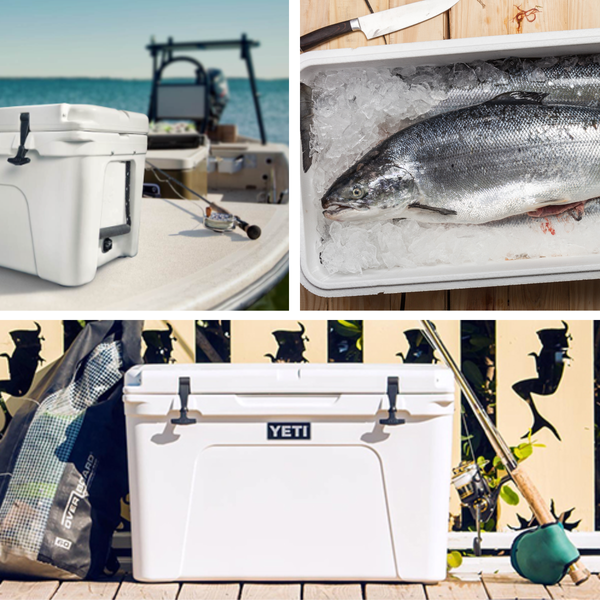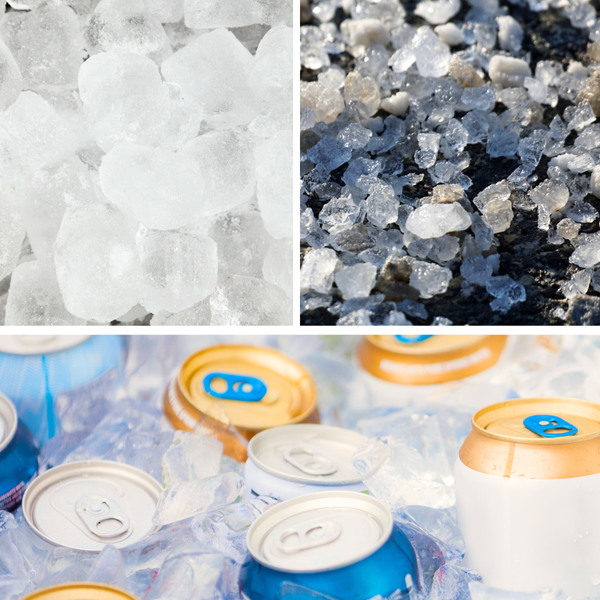Key Takeaways:
- Discover the variety of backyard pizza ovens available and how to choose the right one.
- Learn the nuances of cooking with wood-fired, gas, and electric pizza ovens.
- Understand the maintenance and safety tips to ensure the longevity of your outdoor pizza oven.
The Rise of Backyard Pizza Ovens
The allure of creating restaurant-quality pizza in the comfort of your own backyard has led to the rise of home pizza ovens. These outdoor ovens are not just a trend; they are a reflection of the growing passion for gourmet home cooking. With a backyard pizza oven, you can cook pizzas that boast a crispy crust and evenly cooked toppings, rivaling the taste of your favorite pizzeria.
Choosing the Right Pizza Oven for Your Outdoor Kitchen
When selecting an outdoor pizza oven, consider the space available, your cooking style, and the fuel source you prefer. Wood fired pizza ovens offer the traditional smoky flavor and high temperatures ideal for Neapolitan pizza. Gas ovens, using either natural gas or a propane tank, provide more control and convenience. Electric pizza ovens, with their electricity pizza diameter, are perfect for those who prioritize ease of use and consistent temperatures.
Wood Fired Cooking: The Traditional Choice
Wood fired pizza ovens are the epitome of traditional outdoor cooking. The radiant heat from the fire, combined with the conductive heat of the pizza stone, creates a unique baking process that imparts a smoky flavor and a spotted crust. The high temperatures achieved in wood pizza diameter ovens are perfect for achieving that golden brown finish.
The Art of Managing Wood Fired Temperatures
Cooking with wood pizza diameter ovens requires mastering the balance of direct heat, convective heat, and radiant heat. It's all about managing hot spots and ensuring the ideal temperature is maintained throughout the cooking process. This might involve rotating the pizza or adjusting the wood placement to avoid burning.
Gas Ovens: Precision and Ease
Gas ovens for outdoor use offer precision and ease that can be appealing to many home chefs. With a turn of a knob, you can adjust the flame to get the perfect temperature for your pan pizza or crispy pizzas. Whether you're connected to a natural gas pizza diameter line or using a portable propane tank, gas ovens can be a convenient option.
The Benefits of a Consistent Heat Source
The consistent heat provided by a gas oven means fewer worries about hot spots and more focus on the cooking. This allows for an evenly cooked pizza without the need for constant attention. Gas ovens are also typically easier to clean and maintain than their wood-fired counterparts.
Electric Pizza Ovens: Cutting Edge Technology
Electricity pizza diameter ovens are at the forefront of cutting edge technology in the realm of home pizza ovens. They offer a level of precision that can be hard to achieve with other fuel sources. With electric ovens, you can set the exact temperature you need for baking breads, pies, or that perfect crust.
The Convenience of Electric Ovens
For those who value convenience, electric pizza ovens are a game-changer. They heat up quickly, require minimal setup, and can be used in a variety of settings. The lack of smoke means they're also a good choice for those with limited outdoor space or in areas with restrictions on wood smoke.
The Versatility of Portable Pizza Ovens
Portable pizza ovens with foldable or retractable legs are a fantastic option for those who love to entertain or enjoy pizza on the go. These ovens are designed for outdoor use and can be easily transported to picnics, camping trips, or tailgating events.
Choosing a Portable Oven for Your Lifestyle
When selecting a portable pizza oven, consider the weight, ease of assembly, and fuel source. Smaller pizza peel options and a large opening can make a portable oven just as functional as a stationary one. Premium materials and design can also ensure that your portable oven stands up to the rigors of travel.
The Perfect Pizza Stone: A Key Component
The pizza stone is a critical element in the baking process, providing the conductive heat necessary to achieve a crispy base. Whether you're using a wood-fired, gas, or electric oven, the pizza stone should be made of high-quality materials that withstand higher temperatures and distribute heat evenly.
Maintaining Your Pizza Stone
To ensure the longevity of your pizza stone, it's important to handle it with care. Avoid drastic temperature changes that can cause cracking, and clean it according to the manufacturer's instructions. A well-maintained pizza stone can last for years and become a cherished part of your outdoor kitchen.
Cooking Beyond Pizza: Exploring the Possibilities
Outdoor pizza ovens are not limited to just pizza; they are versatile tools that can bake, roast, grill, and smoke a variety of foods. From crusty breads to succulent meats and roasted vegetables, the possibilities are endless.
Crafting Restaurant Quality Pizza at Home
The dream of crafting restaurant-quality pizza in the comfort of your own backyard is now a reality, thanks to the advent of high-quality outdoor ovens. With the right techniques and a bit of practice, you can achieve that perfect balance of a crispy crust and well-cooked toppings that pizza aficionados strive for. The key is in the heat distribution and retention properties of your oven, which are essential for replicating the professional results you'd expect from a pizzeria.
Outdoor ovens like the Gozney Dome have revolutionized home pizza cooking by offering a versatile cooking environment that can reach the high temperatures needed for those authentic, charred crusts. The Dome's design allows for precise temperature control, ensuring that your dough cooks evenly and your toppings sizzle to perfection. Whether you're a seasoned chef or a weekend warrior in the kitchen, the Gozney Dome can elevate your pizza game to restaurant levels.
The Science of Perfect Dough and Crusts
Understanding the science behind perfect dough and crusts is crucial for achieving that coveted restaurant-quality pizza. The interaction between the heat from your outdoor oven and the yeast in your dough is what gives your pizza its texture and flavor. A hot oven causes the dough to rise quickly, creating airy pockets and a light, chewy crust. This is why outdoor ovens, which can maintain higher temperatures than conventional kitchen ovens, are ideal for pizza enthusiasts.
When it comes to dough, the devil is in the details. Factors such as hydration, fermentation time, and flour type all play a role in the final outcome. Cooks who take the time to master these elements will find that their crusts are consistently excellent, with the right amount of crunch and chewiness. By using an outdoor oven like the Gozney Dome, you can apply this knowledge to produce pizzas with crusts that rival those of the best pizzerias.
The Art of Pizza Dough Preparation
When it comes to achieving that perfect slice of pizza cooked to perfection, the journey begins long before the oven is even heated. The foundation of any great pizza is its dough, and mastering the art of dough preparation is essential. Selecting the right flour, yeast, and hydration level can make all the difference in texture and flavor. A well-kneaded dough that's allowed to rise properly will result in a crust that's crispy on the outside and chewy on the inside, providing the ideal base for your toppings.
Moreover, the proofing process is not to be rushed. Allowing the dough to ferment slowly in a cool environment enhances its flavor complexity and digestibility. Some aficionados swear by a cold fermentation process, letting the dough rest in the refrigerator for up to 72 hours. This slow rise not only develops a more nuanced flavor but also contributes to that coveted airy, bubbly texture. Remember, patience is a virtue when it comes to pizza dough, and the results are well worth the wait.
Crafting the Ultimate Pizza Sauce
The sauce is the heart of a pizza cooked with passion, and crafting the ultimate pizza sauce is an art in itself. A great sauce balances acidity, sweetness, and herbaceous notes, complementing the dough and toppings without overpowering them. Starting with high-quality canned tomatoes or fresh, ripe tomatoes is key. Crushing them by hand or with a food mill preserves the texture and freshness, avoiding the overly processed taste that can come from pre-made sauces.
In addition to the tomatoes, incorporating the right blend of herbs and spices is crucial. Classic Italian herbs like basil and oregano are staples, but don't be afraid to experiment with garlic, thyme, or even a hint of chili for some heat. Simmering the sauce gently allows the flavors to meld together and intensify. Whether you prefer a chunky sauce or a smooth puree, the goal is to create a sauce that will elevate your pizza cooked in any style of backyard oven.
Experimenting with Different Foods
Try using your backyard pizza oven to cook pies, grill steak, or even smoke fish. The high temperatures and unique cooking environment can impart flavors and textures that are hard to replicate with other cooking methods. Don't be afraid to experiment and discover new culinary delights.
Safety and Maintenance: Ensuring Durability
Proper maintenance and safety practices are essential for the longevity of your outdoor pizza oven. Regular cleaning, proper storage, and adherence to safety guidelines will keep your oven in top condition and ensure many years of delicious cooking.
Tips for Keeping Your Oven in Prime Condition
Regularly check for any wear and tear, especially if your oven is exposed to the elements. Covering your oven when not in use can protect it from weather damage. Also, be sure to follow the manufacturer's instructions for cleaning and maintenance to prevent any issues.
Building Your Outdoor Kitchen with a Pizza Oven
Incorporating a backyard pizza oven into your outdoor kitchen can elevate your cooking experience. Plan your space to allow for easy access to your oven, prep areas, and storage for tools like your smaller peel and fuel source.
Designing for Functionality and Aesthetics
When designing your outdoor kitchen, consider the aesthetics as well as functionality. A well-designed space can make cooking more enjoyable and turn your backyard into a culinary oasis. Choose materials and designs that complement your home and landscape.
Summary
Backyard pizza ovens have become a staple for food enthusiasts looking to bring the taste and experience of wood fired cooking to their homes. Whether you opt for a traditional wood-fired oven, a convenient gas oven, or a modern electric model, the key to success lies in choosing the right oven for your needs, mastering the cooking process, and maintaining your equipment properly. With the right backyard pizza oven, you can enjoy a wide range of foods cooked to perfection and create unforgettable culinary experiences right in your own outdoor kitchen.
FAQ Section
Q: Can I cook other foods besides pizza in my backyard pizza oven?
A: Absolutely! Backyard pizza ovens are versatile and can be used to bake breads, roast meats, grill vegetables, and even smoke fish. The high temperatures and unique cooking environment offer a wide range of culinary possibilities.
Q: How do I maintain my pizza stone to ensure it lasts?
A: To maintain your pizza stone, avoid exposing it to drastic temperature changes and clean it according to the manufacturer's instructions. Handle it with care to prevent cracking, and store it properly when not in use.
Q: Are portable pizza ovens worth the investment?
A: Portable pizza ovens are a great investment for those who enjoy outdoor activities and want the flexibility to cook pizzas and other foods on the go. Look for ovens with premium materials, foldable legs, and a smaller peel for ease of use and transportation.










